African Mustard
Information
Brassica tournefortii - Brassicaceae Family - Annual
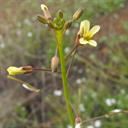
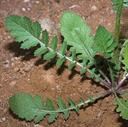
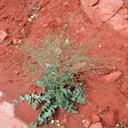
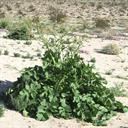
Identification
- Flowers: Dull yellow in color and inconspicuous. Individual flowers are approximately 1.5 cm in width. They are also self-pollinating, which rapidly accelerates seed production and spread.
- Seeds: Seeds are viable for up to 3 years.
- Leaves: The leaves are green and usually situated on a moderately well-developed basal rosette. The leaves also have serrated margins.
- Flowering Time: The seed stalk appears in early spring and grows to approximately 3 feet tall.
- Life cycle: African Mustard is a rapid growth annual which germinates in the fall, flowers in winter, and dies in spring.
Impacts
- Its ability to spread extremely rapidly allows African Mustard to outcompete most native wildflowers, decreasing biodiversity.
- African Mustard biomass greatly increases the fuel available to wildfires.
- Because it blooms early in the season (as early as December, setting seeds as early as February), African Mustard can monopolize soil moisture before native wildflowers appear.
Control
Most effective control methods
- Early detection and proactive management are key, as well-established infestations are extremely difficult to control.
- Small infestations of African Mustard can be effectively controlled by manually pulling and disposing in the trash.
- Chemical applications can effectively control African Mustard year-round. Care must be taken to avoid killing surrounding plants, as a healthy population of native plants can slow its spread.
- African Mustard is best treated at the beginning of its life cycle before flower bolt (late autumn).
Large Images
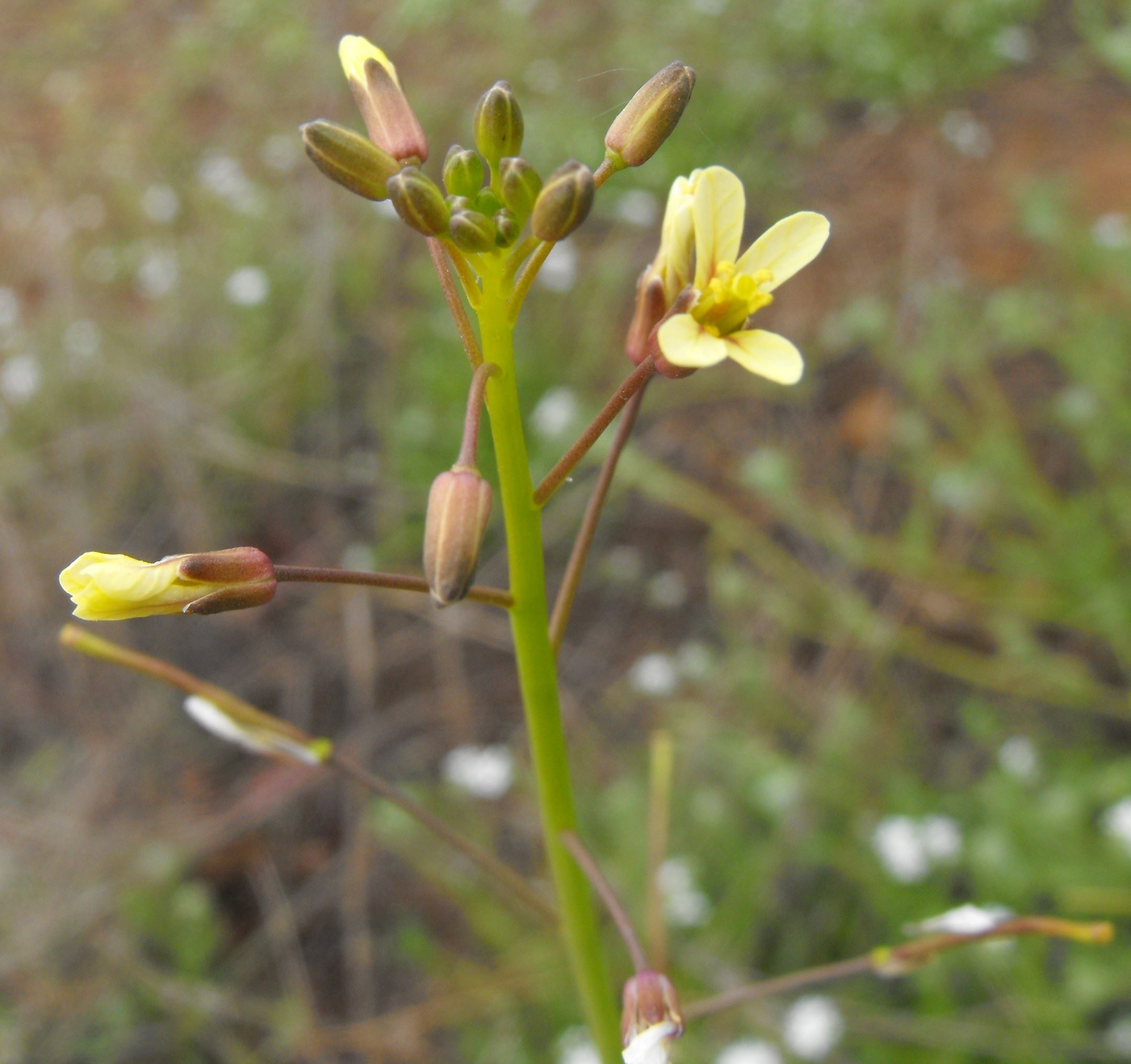
African mustard: flower
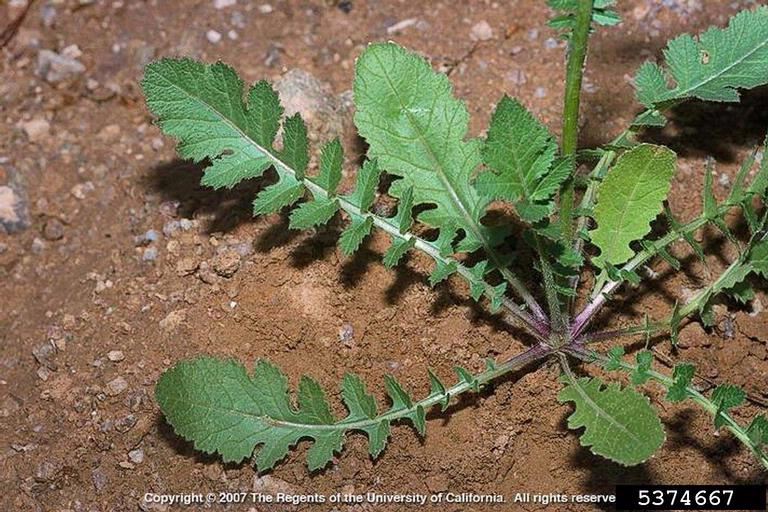
African mustard: foliage
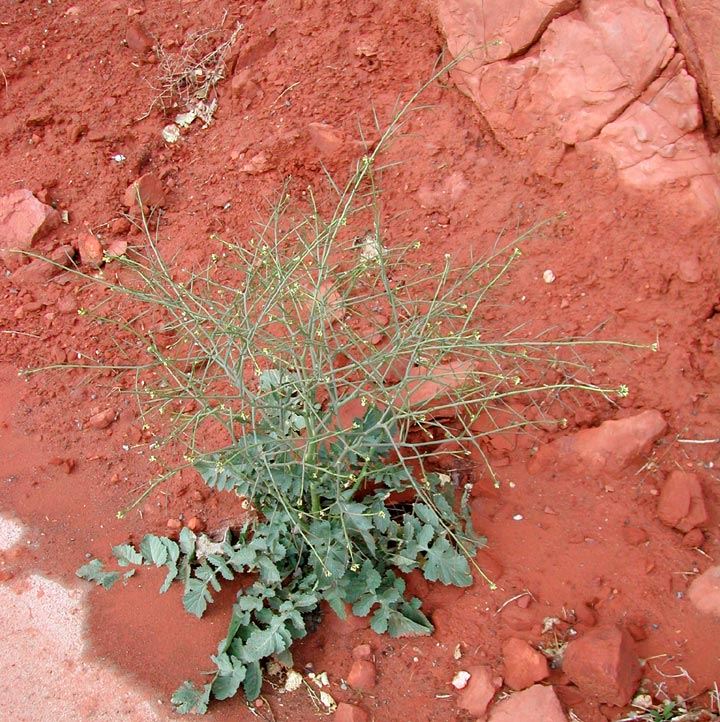
African mustard: full plant
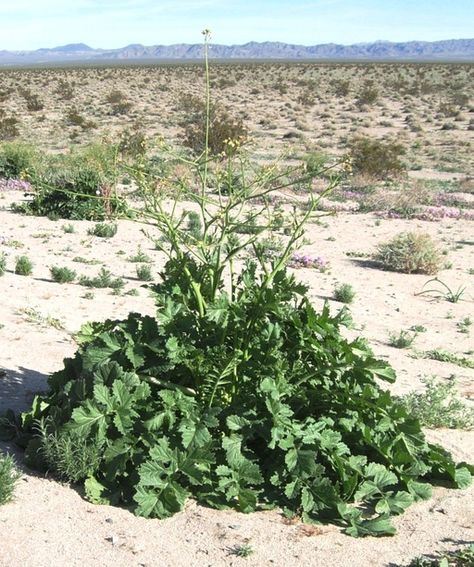
African mustard: infestation
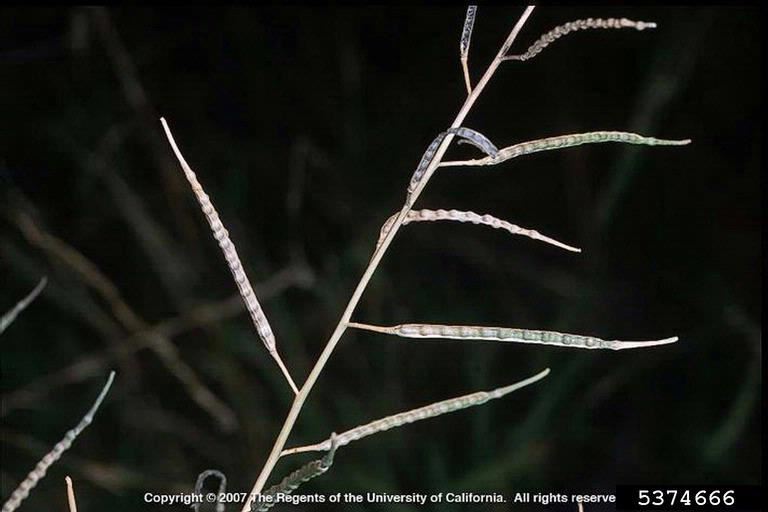
African mustard: fruit
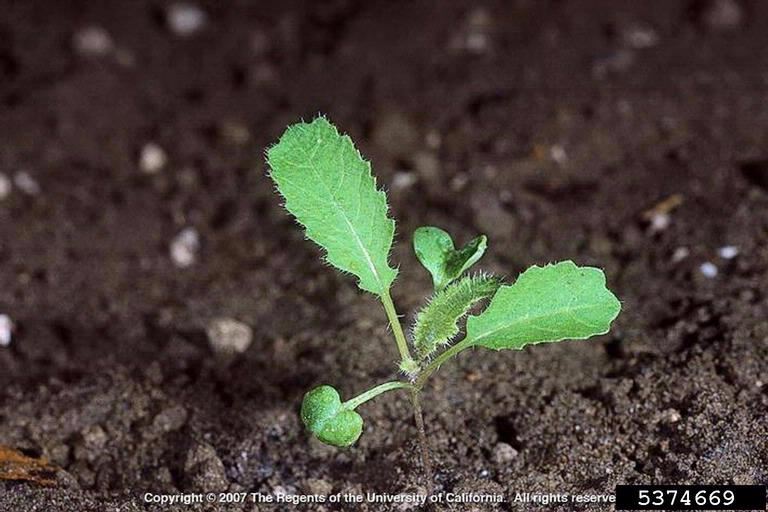
African mustard: seedling
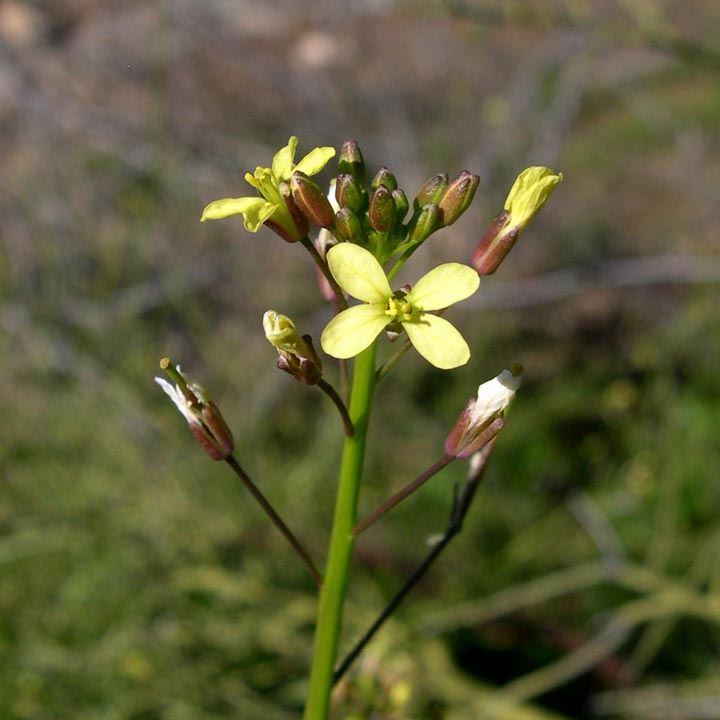
African mustard: flowers
Resources
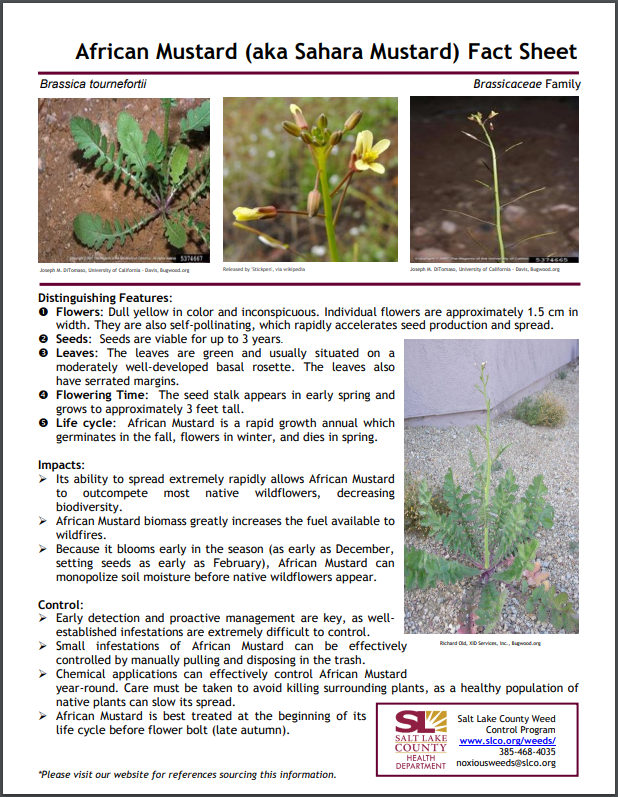
References
DiTomaso, J.M., G.B. Kyser et al. (2013). Weed Control in Natural Areas in the Western United States [PDF file]. Weed Research and Information Center, University of California. Retrieved from http://wric.ucdavis.edu/information/natural-areas/wr_B/Brassica_tournefortii.pdf View PDFInvasive Species Compendium. (2018, July 14). Brassica tournefortii (African mustard). Retrieved from https://www.cabi.org/isc/datasheet/50069
United States Department of Agriculture. (2015, February). Field Guide for managing African mustard in the Southwest [PDF file]. Retrieved from https://www.fs.usda.gov/Internet/FSE_DOCUMENTS/stelprd3828962.pdf View PDF
U.S. National Park Service: Santa Monica Mountains National Recreation Area. Invasive Weed Field Guide [PDF file]. Retrieved from https://www.nps.gov/samo/planyourvisit/upload/RecPub_InvasiveWeedGuide.pdf View PDF
Weed Science Society of America. (2014). Models of invasion and establishment for African mustard (Brassica tournefortii) [PDF file]. Retrieved from https://www.researchgate.net/publication/278326298_Models_of_Invasion_and_Establishment_for_African_Mustard_ Brassica_tournefortii




